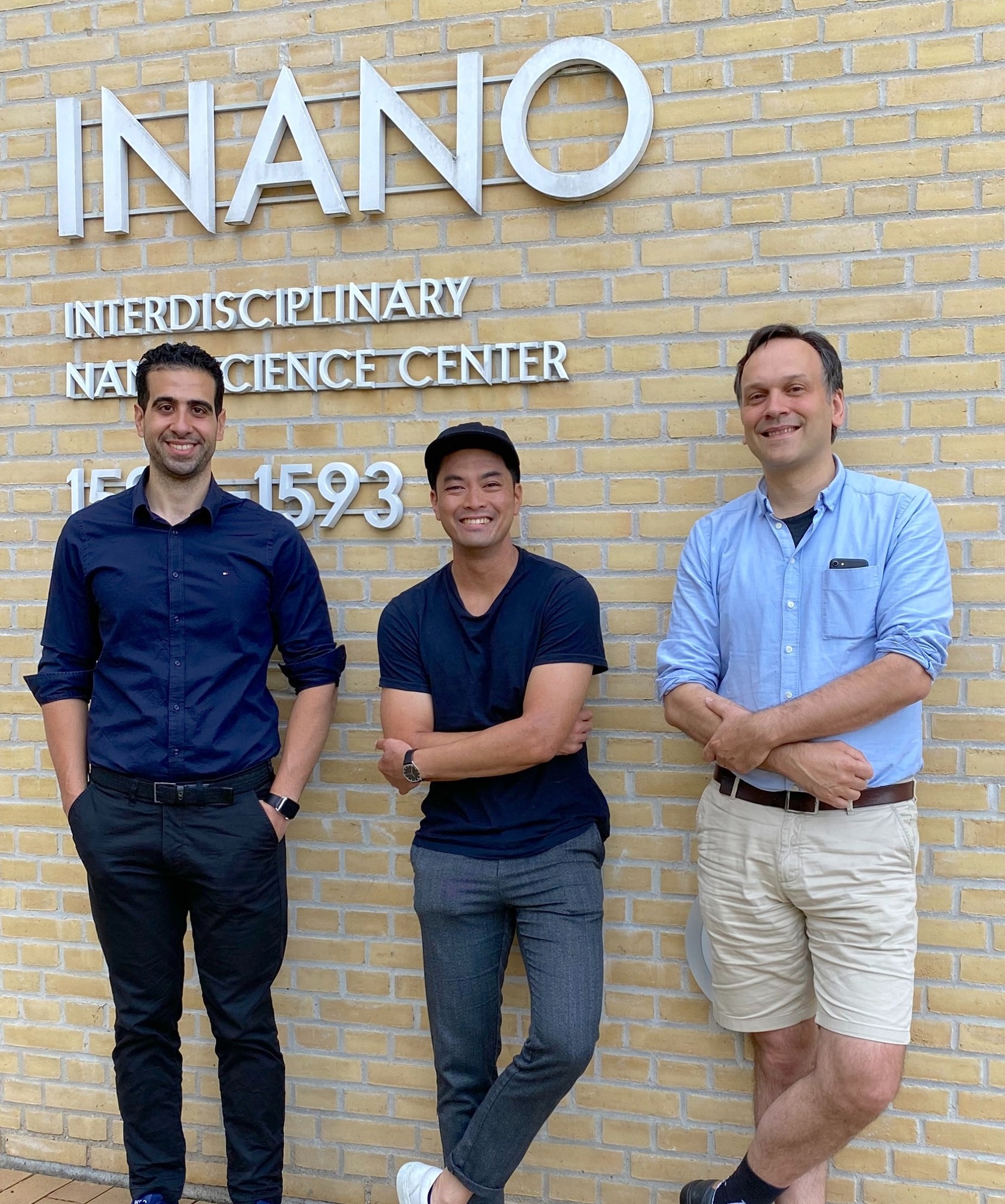Reviewed by Danielle Ellis, B.Sc.Oct 6 2022
Synthetic biology aims to acquire comprehensive control over biological functions to produce designer organisms for a range of commercial, diagnostic, and therapeutic uses.
 iNANO researchers, George Pothoulakis, Michael Nguyen, and Ebbe S. Andersen has published findings on RNA origami enabling applications in synthetic biology. Image Credit: Lise Refstrup Linnebjerg Pedersen (AU)
iNANO researchers, George Pothoulakis, Michael Nguyen, and Ebbe S. Andersen has published findings on RNA origami enabling applications in synthetic biology. Image Credit: Lise Refstrup Linnebjerg Pedersen (AU)
When it comes to sophisticated genetic regulation of enzymatic pathways in microorganisms, researchers at the iNANO center of Aarhus University have created RNA origami sponges and CRISPR-based regulators. This will increase the production of vital biochemicals.
One of the primary tenets of the now-mature discipline of synthetic biology has been the development of tools for the precise control of biological processes. These scientific tools incorporate principles from a range of research domains which when combined permit new applications that are potentially transformational for modern society.
Due to its compatibility with cell folding and expression, current RNA nanotechnology has enormous potential in biology, but it also presents special difficulties due to the RNA molecules’ intrinsic instability and stringent performance requirements.
The Andersen lab recently developed a structural RNA design technique called “RNA origami” that aims to address this. The goal of this strategy is to produce sophisticated RNA-based devices manufactured by humans that are stable in cells, interact with other biomolecules like proteins and other RNA, and support unique functions, particularly in the context of gene regulation.

Image Credit: ART-ur/Shutterstock.com
RNA origami is presented as a complex RNA design platform that, when used in the cellular setting, provides distinctive molecules for synthetic biology-based regulation, as shown by two separate methodologies recently published.
RNA sponges regulate enzyme production in bacteria
In the first method, when expressed in bacteria, the RNA origami was used to obtain the precise control of protein synthesis levels. By adding a potent protein binding site to the expressed protein’s own gene, self-inhibiting protein expression cassettes were created. The same protein-binding sites were then expressed in enormous quantities in RNA origami.
As a result, the self-inhibited protein can be expressed since the RNA origami acts as a protein-sponge to bind proteins inside the cell. It has been demonstrated that this broad idea makes it possible to regulate multiple proteins at once and activate enzymatic pathways to increase product yields.
CRISPR-based regulators for yeast chemical factories
The second method controls gene expression in yeast by combining RNA origami with CRISPR, one of the most well-liked contemporary molecular biology tools. The small RNAs that direct CRISPR-Cas9 to target particular regions in the DNA genome have the RNA origami integrated into them.
To attract transcription factors, protein-binding sites were added to the RNA origami scaffolds.
The transcription factors induced gene expression by concentrating on promoter sites and binding the RNA scaffolds there. It has been demonstrated that the scaffold’s orientation and the number of transcription factors it recruits can be used to adjust the expression strength.
Finally, it was shown that it was possible to manipulate many enzyme routes for high-yield violacein production.
Source:
Journal references:
- Nguyen, M. T. A., et al. (2022). Synthetic Translational Regulation by Protein-Binding RNA Origami Scaffolds. ACS Synthetic Biology. doi.org/10.1021/acssynbio.1c00608
- Pothoulakis, G., et al. (2022). Utilizing RNA origami scaffolds in Saccharomyces cerevisiae for dCas9-mediated transcriptional control. Nucleic Acids Research. doi.org/10.1093/nar/gkac470